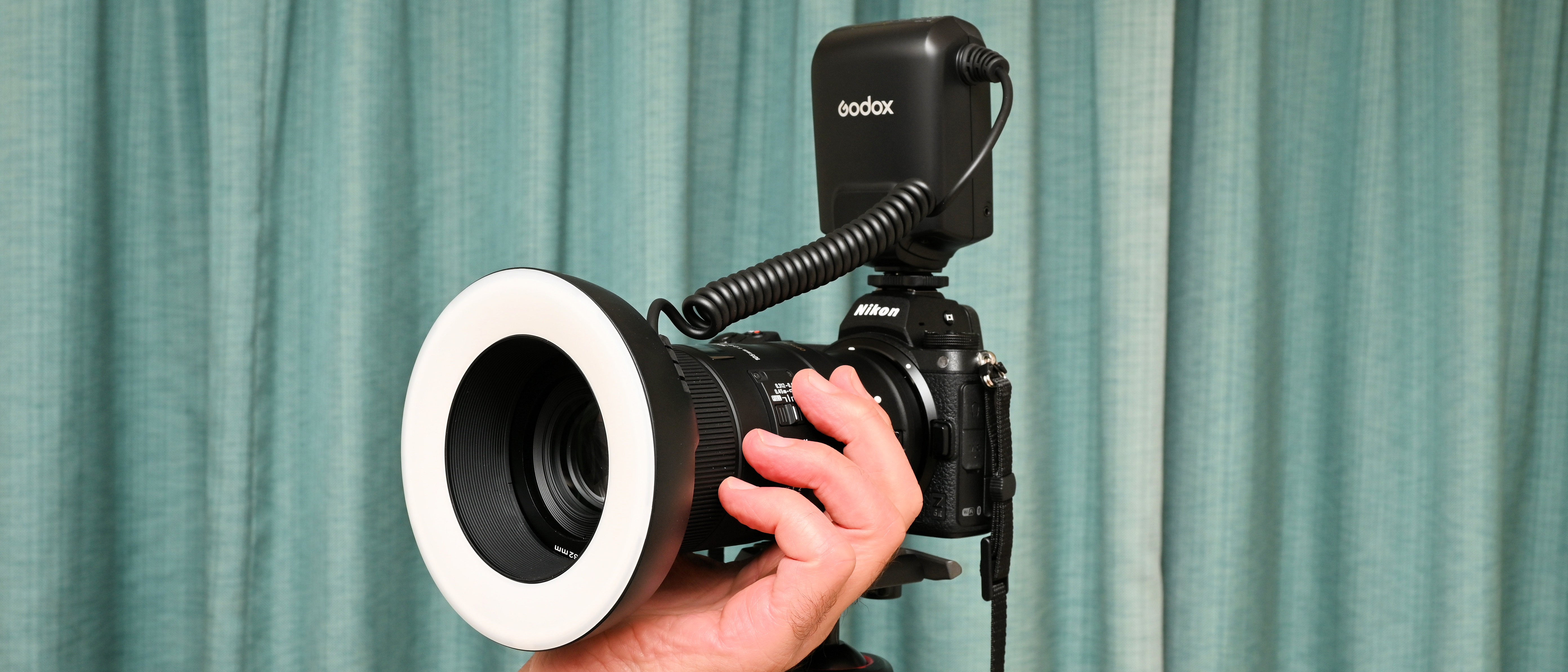
Skip to main content
Close main menu
Digital Camera World
THE HOME OF DIGITAL PHOTOGRAPHY
View Profile
Search Digital Camera World
Accessories
Buying Guides
The Photography & Video Show
Digital Camera
Australian Camera
Australian ProPhoto
Photography Magazines
Why subscribe?
Issues filled with product reviews, latest updates, expert advice and more
Delivered to your Android or IOS device
Every issue is packed with photo tips, kit reviews and inspiration
From$12Subscribe now
Camera news
Camera rumors
Photography & Video Show
Cheatsheets
Photo mag deals
Prime Day deals
Don’t miss these
Viltrox Vintage Z1 Retro Flash review: an old-school flash to suit thoroughly modern cameras
Godox iT30 Pro review: this dedicated TTL flash is tiny but mighty in terms of features and functions
Godox XPro TTL/HSS flash trigger review: an object lesson in wireless RF trigger-nometry
Camera Lights
Neewer Q6 Flash review: take the studio outside
Video Lights
Amaran Verge and Verge Max review: diffuse fill and key lights for your home studio
Best Nikon flashguns in 2025: Nikon-fit Speedlights you can buy today
Camera Lights
The best LED light panels in 2025: portable lighting for photography and video
Video Lights
Harlowe Sol 5 Spectra Creator Kit review: a stylish, portable and colourful LED
Viltrox AF 56mm f/1.2 Pro review: a go-faster portrait prime for APS-C format cameras
Could this be the ultimate macro photography light?
The best macro lenses: experience extreme magnification in close-up shooting
LK Samyang AF 85mm f/1.8 P FE review: a portrait prime for Sony cameras that focuses on your budget as well as your subject
Video Lights
Best video lights in 2025: get better lighting for vlogging and filmmaking
Camera Accessories
Best light meter for photography in 2025
This tiny, compact camera flash uses magnetic modifiers – and only weighs about as much as a golf ball
Camera Accessories
Camera Lights
Godox ML-150II Macro Ring Flash review: effective close-up lighting for almost any camera
The Godox ML-150II Macro Ring Flash comes in just one flavor, designed to be as universal as possible rather than being dedicated to individual makes of camera
Matthew Richards
17 September 2025
When you purchase through links on our site, we may earn an affiliate commission. Here’s how it works.
(Image: © Matthew Richards)
Digital Camera World Verdict
I like that the Godox ML-150II Macro Ring Flash works with the largest possible range of cameras – pretty much anything that has a central firing pin in its hot-shoe. It also works with a huge range of lenses, thanks to the inclusion of no less than eight different attachment rings. It’s incredibly simple to use but, ultimately, is quite a bare bones affair with no fancy frills.
Circular flash tube
Works with almost anything
8 attachment rings included
Limited power range
No left/right split
No auto flash exposure
Best picks for you
The best ring flash for macro photography in 2025: use a ring light for better closeups
The best flashgun in 2025: camera strobes, Speedlights and Speedlites for every budget
Best Canon flashgun: which Speedlite will be best for you?
Why you can trust Digital Camera World
Our expert reviewers spend hours testing and comparing products and services so you can choose the best for you. Find out how we test.
Specifications
Price & Availability
Design & Handling
Performance
Lab results
Alternatives
When it comes to flash, I’ve invested in Godox for work and play. I’ve been using a pair of Godox Ving V860III flashguns and a companion Godox XPro i-TTL RF wireless trigger for a couple of years now, for paid photo assignments and just for fun, pairing them with my Nikon Z system cameras. I’ve also been impressed with the Godox V1, Godox V1 Pro and Godox V100 flashguns, all of which feature a round rather than rectangular flash tube. For my money, they’re among the best flashguns on the market, and there are also the relatively tiny Godox iM20 and Godox iM22, which are manual flashes designed to work with a wide range of cameras.
The ML-150II Macro Ring Flash follows suit, with ‘universal’ appeal that enables it to work with any camera that has a central triggering pin in a standard-sized hotshoe. There are therefore no dedicated options and, unlike the more advanced, retro-styled Godox iA32, it lacks auto flash metering courtesy of a built-in light meter or optical slave modes. Even so, it aims to be a worthy competitor as one of the best macro ring flash kits on the budget-friendly side of the market.
Typical of macro ring flash kits, the Godox comprises a control unit and a flash unit, joined together by a stretchy curled cable. (Image credit: Matthew Richards)
Godox ML-150II: Specifications
Swipe to scroll horizontally
Guide number
12 (m/ISO100)
Available for
Universal (center pin)
Lighting type
Circular flash
Recycle time
0.1 to 2 secs
Exposure control
420g (with batteries)
Godox ML-150II: Price
Advanced macro flash kits from the likes of Canon and Nikon can cost anything up to $1,079 / £1,129 / AU$1,749 for the Canon Macro Twin Lite MT-26EX-RT, or $880 / £900 / AU$980 for the Nikon R1 Close-Up Speedlight Remote Kit and SU-800 commander unit. That’s a lot of money, even if you’re a pro photographer specializing in macro.
At the budget end of the scale, there’s the K&F Concept KF-150 Macro Ring Flash in Canon and Nikon dedicated versions, at $116 / £100 / AU$180, and the Neewer RF1 Macro Ring Flash at $108 / £130 / AU$168, which comes in Canon, Nikon and Sony dedicated options. In some world regions, the Godox ML-150II Macro Ring Flash undercuts them all, with a typical purchase price of $89 / £99 / AU$170, but it’s a comparatively straightforward kit.
Today’s best Godox ML-150II deals
We check over 250 million products every day for the best prices
Godox ML-150II: Design & Handling
Think macro ring flash and you’re probably thinking of a two-piece kit that includes a control unit and a circular flash unit, joined together by a curly cable. And you’d be absolutely right in this case. While some macro flash kits like the Canon and Nikon ones I mentioned earlier have dual flash heads that you can position at various angles, ‘ring’ flash has a circular tube, as its name suggests. That’s definitely the design ethos behind the Godox ML-150II, but it’s a little different than most.
Both of the main parts of the kit look pretty standard fare for a macro ring flash but the Godox is rather more straightforward than most. (Image credit: Matthew Richards)
The K&F Concept and Neewer kits that I’ve mentioned above come in various dedicated options, to suit specific camera brands. Typical advantages include automatic TTL (Through The Lens) flash exposure metering and both of these kits also deliver programmable ‘Multi’ stroboscopic/repeat flash modes. That said, you might well not feel the need for a Multi flash mode in macro shooting, and the K&F Concept kit that I tried in its Nikon dedicated version only enabled Auto TTL flash with select DSLRs, but not with mirrorless Z-system cameras. That puts the Godox on more of an equal footing. It can be a bit of a moot point anyway, as many photographers (myself included) prefer to set the flash power manually for extreme close-up shooting.
With no dedication on offer, you’ll need to brush up on your manual shooting skills in terms of exposure settings, white balance and, in the case of mirrorless cameras, exposure preview. (Image credit: Matthew Richards)
The only real inconvenience is that with no dedication, the host camera doesn’t even know there’s a flash unit slotted into the hotshoe, switched on and ready to roll. With mirrorless cameras, you’re likely to need to switch off ‘live exposure preview’, as well as shooting in Manual exposure mode and changing the white balance to its ‘Flash’ setting.
Get the Digital Camera World Newsletter
The best camera deals, reviews, product advice, and unmissable photography news, direct to your inbox!
Contact me with news and offers from other Future brandsReceive email from us on behalf of our trusted partners or sponsorsBy submitting your information you agree to the Terms & Conditions and Privacy Policy and are aged 16 or over.
A telltale sign of the lack of dedication is that the hotshoe of the Godox control unit only has a single connection pin at its center, rather than any peripheral pins. This is used for triggering the flash from any camera that has a regular hotshoe. And even if it doesn’t, you can often get a hotshoe converter for cameras that feature a non-standard hotshoe. There’s also a PC Sync socket on the side for cable-fed triggering.
With no dedication for specific makes of camera, the hotshoe foot only has a single electronic connection pin. (Image credit: Matthew Richards)
With no alternative flash modes nor any auto flash metering and therefore no flash exposure compensation, the layout of the control unit is very simple. Instead of the usual LCD information panel and plethora of pushbuttons, plus a 4-way pad or rotary dial, the Godox gets back to basics. All you have to contend with is an on/off switch, a test fire button, and a pair of +/- buttons for turning the brightness up or down. It really couldn’t get any simpler, but you do get an illuminated display to show the current power setting.
The control unit has simple +/- buttons for increasing or decreasing the flash output power. Illuminated bars show the current setting, with illuminated dots in between for half EV settings. (Image credit: Matthew Richards)
The overall power range stretches from 1/32nd to 1/1 full-power output. That’s not overly generous, considering that many macro ring flash kits offer two further full EV steps of power reduction, down to 1/128th, and that the power is adjustable in 1/3rd EV increments rather than the half EV steps of the Godox.
There are eight attachment rings supplied with the kit, starting small at 49mm and covering popular sizes right up to 77mm. (Image credit: Matthew Richards)
While the control unit is pretty much as universal as possible, the same goes for lenses with which you can use the kit. There’s a generous provision of eight attachment rings supplied in the kit, catering to lenses with a filter thread of 49, 52, 55, 58, 62, 67, 72 or 77mm in size. That covers all popular options from a very small 49mm right up to 77mm. As is usually the case, 77mm is the largest you can go, as it’s somewhat governed by the size of the flash unit itself. Suffice it to say that the kit should be compatible with pretty much any and every macro lens.
There’s no split left/right configuration for applying a ratio of different power settings to either side. Instead, the Godox has a single, uninterrupted circular flash tube. (Image credit: Matthew Richards)
It’s not just the control unit that’s pared down for the ultimate in simplicity. The same applies to the flash unit. Most macro ring flashes that I’ve used have independent semi-circular tubes on the left and right, as well as LED lamps at the top and bottom. Both of the K&F Concept and Neewer kits are designed in this way. A key factor of ring flash for macro photography is that it delivers uniform, shadowless lighting. However, if you have two left and right tubes, you can alter the power ratio between them, to add a desired amount of shadow and 3D modelling.
That’s not possible with the Godox, as it simply has a single, fully circular tube. The lack of LED lamps at the top and bottom means there’s also nothing on offer for AF-assist or modelling lamps. One plus point of having a single, uninterrupted and fully circular tube is if you’re using the flash for portraiture rather than macro photography. In this case, you’ll be able to get those desirable and perfectly circular, halo-shaped catchlights in the eyes of the person you’re photographing. There’s always an upside!
Unlike most Godox flashguns on the market, this one runs on a traditional set of AA batteries. (Image credit: Matthew Richards)
Most of the Godox flashguns I’ve used, both large and small as well as in-between, feature a rechargeable Li-ion battery pack. It tends to be hot-swappable in the medium to large flashguns and built into the small ones. Advantages typically include super-speedy recycle speeds even after a full-power flash, and plenty of stamina so you can keep shooting long after traditional batteries have died.
This macro ring flash kit takes a more conventional approach, running on a set of four AA batteries. Godox reckons you can get from 300 to 1,000 flashes from a set of batteries, depending on power settings, and claims a nippy recycle speed of 2 seconds after a full-power flash. Naturally, you can use alkaline batteries, but I’d always go for a set of the best rechargeable AA batteries, which maintain relatively fast recycle speeds until they’re exhausted, and are then easy to recharge so you can use them over and over again.
Just to the right of my thumb in this shot you’ll see the PC Sync socket for cable-connected triggering. (Image credit: Matthew Richards)
Godox ML-150II: Performance
I’m not actually a massive fan of Auto TTL flash metering. That’s especially true when it comes to extreme close-up and full macro photography. I think it’s easy to get a feel for how much flash power you need when working at very short distances. It’s simple to dial in the required manual power setting, review the results as you shoot, and make any fine-tuning adjustments as you go. I tested the Godox ring flash with my trusty Sigma 105mm f/2.8 EX DG OS HSM Macro, which has a fairly typical working distance between the front of the lens and the subject of about 6 inches, at its shortest focus setting for maximum macro magnification. That really is close, so you don’t need a whole lot of flash power.
As it turned out, the absolute minimum power setting of the Godox was about right for an aperture of around f/11 to f/16, depending on subject matter, when using my camera’s base sensitivity setting of ISO 100. Again, that’s at the shortest focus length and a working distance of 6 inches or so. I used these settings to take the following test shot of a Rotary wristwatch.
With its glass cover and shiny surfaces, this wristwatch is notoriously difficult to shoot with a regular flashgun. Stray reflections and glare can be very problematic. The flash delivered by the Godox from around the circumference of the lens ensures even, shadowless lighting without any glare or reflections. Job done! (Image credit: Matthew Richards)
The quality of light in terms of white balance and color spectrum remain impressively consistent throughout the entire flash range, right down to the lowest power settings. That’s a particular challenge for flash technology, based on IGBT (Insulated Gate Bipolar Transistor) electronics. The color pencils in the following shot have accurate color rendition but, without the split/dual left and right flash tubes, I was unable to accentuate texture and shadows in the bare wood areas of the pencils around the sharpened tips.
Color quality is very good in this shot using a very low flash power setting but the lack of being able to set different left/right power settings limits the accentuation of texture in the wood around the tips. (Image credit: Matthew Richards)
The claimed maximum power output of Gn 12 (ISO 100, meters) is only about as strong as you might expect from a tiny pop-up flash, if and when featured in a camera. It bears repeating, though, that relatively little power is required, due to the flash ring being positioned on the front end of a macro lens for extreme close-up photography, at very close working distances. Indeed, too much flash power at the minimum setting can be more of a problem.
When testing the Godox with a flash meter, I got a reading of Gn 8 at the maximum power setting. That’s rather lower than the claimed Gn 12, but I often find this scenario when testing flashguns. The built-in diffusion cover no doubt reduces the power of the bare flash tube, but has the advantage of softening the quality of light and reducing unwanted specular highlights. Either way, I found that at greater distances for looser close-ups, there was still plenty of power on tap.
At greater distances to shoot general close-ups rather than full macro shots, there’s still plenty of power in reserve, as shown in this shot of toy soldiers. (Image credit: Matthew Richards)
Performance in terms of recycling speed proved pretty good. I found that the Godox nearly lived up to its claims of a 2-second recycling speed after a full-power flash, turning in a time of 2.4 seconds. As I’d expect, recycling after relatively low-power flashes is virtually instantaneous – time to get snap-happy!
(Image credit: Matthew Richards)
The Godox has done well to reveal the finest levels of detail in the macro shot of a cut flower above, and of a tray of seeds below.
(Image credit: Matthew Richards)
Godox ML-150II: Lab Results
We test all available features for each flashgun that goes through out labs. To test power output, we use a Sekonic flash meter placed at a distance of one meter from each flashgun. We check the complete range of manual power settings, in one-stop increments. Based on a sensitivity of ISO 100, the figures correlate directly with the Gn (Guide number) in meters. The results are double-checked by taking shots of a gray card with the appropriate lens apertures and using the camera’s histogram display in playback mode. We also use the gray card to test the accuracy and consistency of Auto and Auto TTL flash metering, where featured.
We check the speed with which each flashgun can recycle to a state of readiness, throughout its range of power settings, culminating in a full-power flash. We use freshly charged Ni-MH rechargeable batteries for this, or the supplied rechargeable Li-ion battery pack where featured in some flashguns.
The table below shows both the power output (Gn, ISO 100, meters) at each full EV step through the complete power range, from minimum to maximum output. The recycle speed in seconds is shown for the same settings.
Swipe to scroll horizontally
Power setting
Output, Gn (ISO 100, meters)
Recycle speed, seconds
Godox ML-150II: Verdict
These days, many of us are big fans of automation, from our coffee machines to the transmission in our automobiles. Delegate the work to someone/something else. This Godox macro ring flash is a purely manual affair, requiring a tiny bit more effort. But do you know what? I just don’t care. I think there’s a lot to be said for being Lord Of The Flash and being in complete control, having things exactly like you want them to be, and that goes for the intensity of ring flash in close-up photography.
Sure, I do miss the ability to set different power settings for a ratio between the left and right side of the ring flash, but the Godox is supremely straightforward and easy to use. It excels in delivering uniform, shadowless lighting for macro photography. All things considered, it’s a good bit of kit at a very affordable price.
Swipe to scroll horizontally
The feature set is very basic, with no separate left/right flash tubes nor any auto flash metering.
Although simple, the design works well and ensures compatibility with the widest range of cameras and lenses.
Performance
The Godox delivers high-quality lighting throughout its entire power range, with very uniform and shadowless coverage.
The kit lacks any fancy frills but is priced accordingly, making it good value for money.
(Image credit: Matthew Richards)
Alternatives
The Neewer RF1 Macro Ring Flash has a traditional configuration of control unit plus flash unit with two semi-circular flash tubes and two LEDs. It’s available in dedicated Canon, Nikon and Sony versions, comes with six attachment rings and a set of colored filters which attach magnetically.
The K&F Concept KF-150 Macro Ring Flash has a more typical arrangement of dual flash tubes and two LED lamps, and is available in Canon and Nikon dedicated versions. It works well overall but TTL flash metering in the Nikon version is only compatible with most Nikon DSLRs and not with Z system mirrorless cameras.
Matthew Richards
Social Links Navigation
Matthew Richards is a photographer and journalist who has spent years using and reviewing all manner of photo gear. He is Digital Camera World’s principal lens reviewer – and has tested more primes and zooms than most people have had hot dinners!
His expertise with equipment doesn’t end there, though. He is also an encyclopedia when it comes to all manner of cameras, camera holsters and bags, flashguns, tripods and heads, printers, papers and inks, and just about anything imaging-related.
In an earlier life he was a broadcast engineer at the BBC, as well as a former editor of PC Guide.
You must confirm your public display name before commenting
Please logout and then login again, you will then be prompted to enter your display name.
Viltrox Vintage Z1 Retro Flash review: an old-school flash to suit thoroughly modern cameras
Godox iT30 Pro review: this dedicated TTL flash is tiny but mighty in terms of features and functions
Godox XPro TTL/HSS flash trigger review: an object lesson in wireless RF trigger-nometry
Neewer Q6 Flash review: take the studio outside
Amaran Verge and Verge Max review: diffuse fill and key lights for your home studio
Best Nikon flashguns in 2025: Nikon-fit Speedlights you can buy today
Latest in Flashguns
Neewer RF1 Macro Ring Flash review: a smart close-up contender for Canon, Nikon and Sony cameras
K&F Concept KF-150 Macro Ring Flash review: close-up flash for Canon and Nikon cameras
Godox XPro TTL/HSS flash trigger review: an object lesson in wireless RF trigger-nometry
Ricoh’s tiny new GF-2 flash for the GR IV fills in the missing piece for street photographers
Ingenius Godox gizmo gives a big lift to photographers using mini flashguns
Godox iT30 Pro review: this dedicated TTL flash is tiny but mighty in terms of features and functions
Latest in Reviews
Godox ML-150II Macro Ring Flash review: effective close-up lighting for almost any camera
DJI 5 Mini Pro review – pro drone, pocket sized, ultra light. Why would anyone go bigger?
HP FilmScan 5” Touch Screen Film Scanner review: get your old negs and slides out of the shoebox and into the digital realm
Kodak ColorPlus 200 film review: it’s fine
Kodak Ultramax 400 film review: the Kodak of all trades
Ugreen 25W MagFlow MagSafe 2-in-1 Charger review: Fast and portable
LATEST ARTICLES
Laowa just packed 1.5x macro and 180mm of reach inside a lens that only weighs about as much as a loaf of bread – and there’s autofocus (sort of)
DJI’s teaser – plus a Chinese leak – add up to reveal the Osmo Nano?
Samsung S26 Ultra: new leak hints at questionable design choices
This retro compact camera has less than 2MP, but it’s already sold out. Fans are already obsessed with the new $30 Kodak Charmera
Ugreen 25W MagFlow MagSafe 2-in-1 Charger review: Fast and portable
Digital Camera World is part of Future US Inc, an international media group and leading digital publisher. Visit our corporate site.
Terms and conditions
Contact Future’s experts
Privacy policy
Cookies policy
Advertise with us
Accessibility Statement
Future US, Inc. Full 7th Floor, 130 West 42nd Street,
Please login or signup to comment
Please wait…



